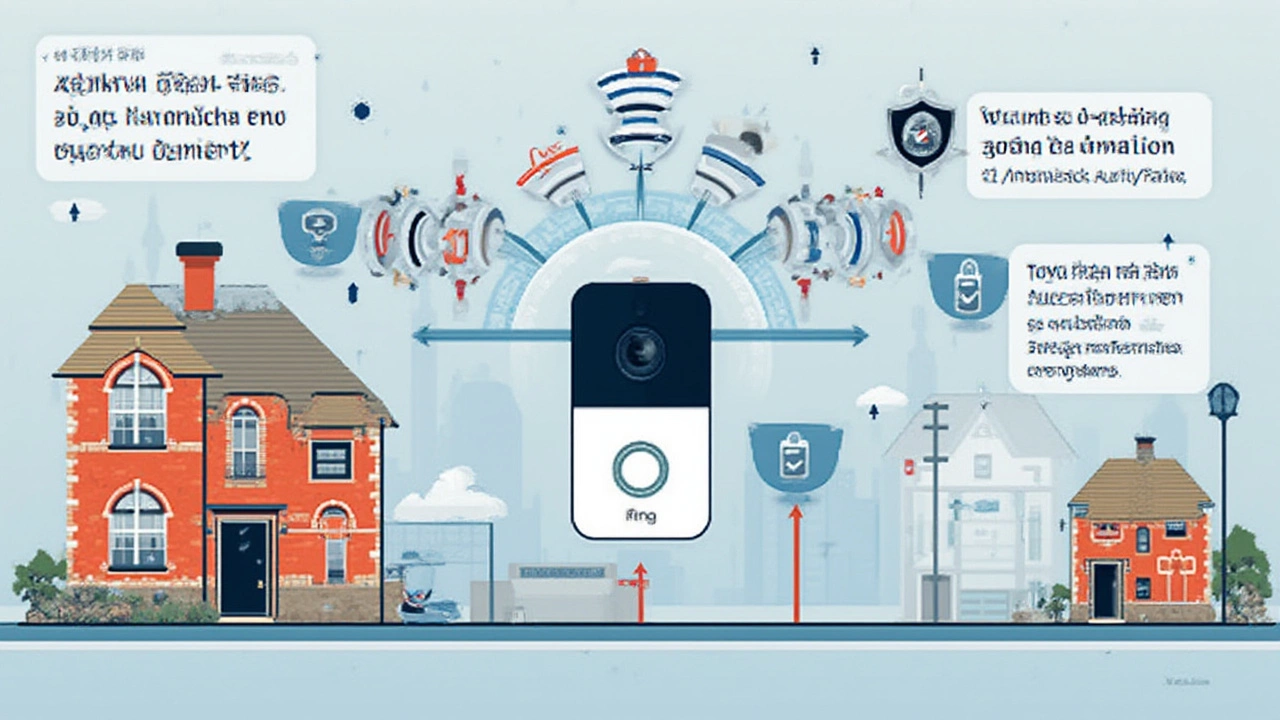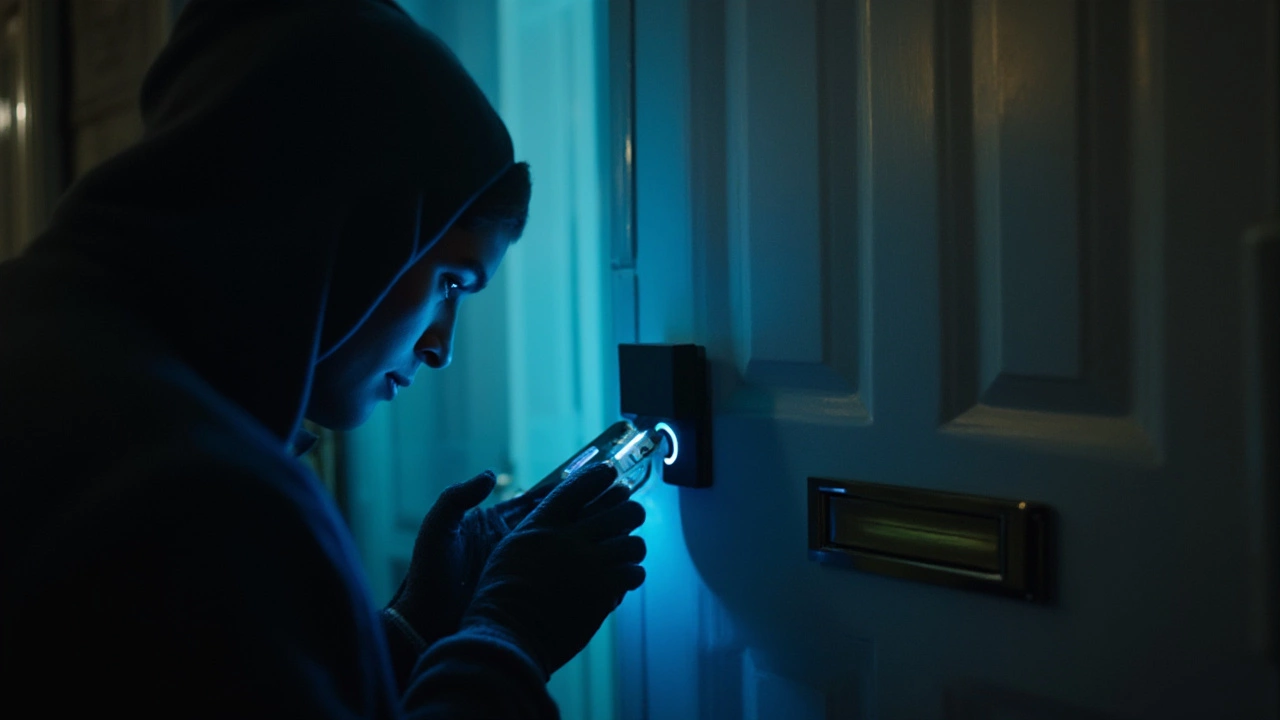Picture this: you’re halfway through a barbecue in Adelaide, sausages sizzling, mates on the patio, when your phone buzzes with a Ring doorbell alert. You glance down, expecting a parcel, but nothing's there. Ten minutes later, your neighbour's talking about a burglary two streets over. You wonder—in the age of smart homes—could a thief actually sneak around, outsmarting your flashy Ring doorbell? Is your best line of digital defence just a glorified peephole, or does it actually keep the bad guys out? This question keeps popping up, and it’s not just some paranoid fantasy. Let’s rip the band-aid off and get real about whether thieves can actually disable these popular video doorbells—and what you can do to stop them from beating your security at its own game.
How Ring Doorbells Work and Where They’re Vulnerable
Ring doorbells aren’t magic. They rely on familiar tech: Wi-Fi, cloud storage, a tiny camera, a microphone and some motion sensors jammed inside a weatherproof shell. You screw the device next to your front door, sync it with Wi-Fi, and suddenly, you’re watching couriers, neighbours, and yes, would-be thieves in crisp 1080p video from your phone. Sounds pretty foolproof, right? But it pays to know how Ring’s tech actually functions, because those very strengths are also weak points thieves sometimes target.
First, the basics. Ring doorbells start rolling film when motion triggers the onboard sensor or when someone presses the button. Everything streams straight to your phone or to the cloud, which means you need reliable Wi-Fi. If your home has dodgy Wi-Fi or your router’s hiding under a pile of shoes, that video could go missing in action. Power outages, cheap Wi-Fi extenders, routers tucked in metal cabinets—these can cripple a Ring in seconds. Even with battery models, there’s no video if your Wi-Fi coughs or your internet provider chucks a hissy fit.
This is where the problem starts: Wi-Fi jammers. For under $100 online, people can buy bulk signal jammers the size of a phone charger. They block or scramble your Wi-Fi signal, rendering a Ring doorbell deaf and blind. Is this legal? Definitely not, but legality doesn’t stop criminals trying to sneak past your tech. Now, most basic thieves won’t carry a jammer, but more determined ones do. The instant your doorbell loses connection, it can’t upload video. That means if a thief swoops in during that tiny outage window, the main benefit of your camera—recording the crime—vanishes with the signal.
Even without any fancy tech, a thief can do old-school damage. A quick yank or bash and, unless you have a backup, your unit is gone. They’re more likely to smack-and-grab battery-powered models, which often lack anti-tampering features. Some users try to wire their Ring doorbells so they sound an alarm if detached, but that’s not standard yet. Wired units provide a little better tamper resistance, but no system is indestructible.
Ever thought about power? Some criminals have been seen (on other people’s doorbell cameras, ironically) simply snipping the doorbell’s wires with pliers, especially in older homes where the cabling’s accessible. Again, that means the whole thing’s dead until you notice and fix it. Not exactly the secure, always-on experience you expect, right?
If the doorbell’s still intact but the Wi-Fi drops for any reason—say, the router’s unplugged, power goes out, or someone triggers a Wi-Fi overload—it can’t push any new video to your app. Some Ring models will still record to memory for a few minutes, but if a thief swipes the whole device, the footage goes with them unless it’s already uploaded.
| Vulnerability | How Thieves May Exploit It | Potential Countermeasure |
|---|---|---|
| Wi-Fi Reliance | Signal jamming, router unplugged | Mesh Wi-Fi, hardwired routers, redundant network |
| Physical Tampering | Uninstall, smash, or steal the device | Special mounts, anti-theft screws, alarms |
| Power Supply | Cutting wiring, draining batteries | Hidden wires, battery backups |
| Cloud Dependence | Footage not uploaded before theft | Immediate cloud uploads, local SD backups |
Let’s not ignore hacking. While it isn’t common for a thief to sit in a car out front, tip-tapping away to hack a doorbell in real time, rings have had security flaws in the past. Scary stories have emerged in the news about strangers talking through speakers or hijacking video feeds. Always update your Ring app and device firmware—skip updates and you’re asking for an unwanted digital guest at your doorstep.
End result: Ring doorbells are much better than basic peep-holes and can scare off plenty of opportunistic crooks. But, if someone really wants to mess with your setup, they can find ways into the cracks. So what should a smart homeowner do about all this?

Real-World Hacks and How Criminals Actually Target Ring Doorbells
If you think a thief just walks up, waves at your camera, and waltzes off—you’re giving them too little credit. In Adelaide alone, police investigations in 2024 turned up several cases of attempted burglaries where Ring doorbells or similar smart cams were messily disabled or yanked off before anything was recorded. Most garden-variety burglars still target houses that look dark, unoccupied, and easy to reach, but camera doorbells do get some specific attention from pros and opportunists.
The Wi-Fi jammer trick has been used in real burglaries. A 2023 case on the Gold Coast involved a syndicate that would first use a portable jammer near front doors to kill all Wi-Fi gadgets in range—including Ring doorbells, alarm sensors, even baby monitors. Once the Wi-Fi blinks out, all events stop being uploaded. If the target was lucky, maybe some grainy footage snapped right before the blackout, but rarely enough to nail anyone in court. The good news is, Wi-Fi jammers only work within about 15-30 metres, so they’re not a citywide switch-off. The bad news? They’re scarily easy to get, and a tech-savvy crook might only need seconds to do their job.
Physical theft is the next-biggest headache. In some suburban Melbourne neighbourhoods, new doorbells were getting popped off with crowbars or even a sturdy screwdriver. One Ring owner had their camera torn off not by a crook—but by a possum. Nature can be as damaging as any criminal. If your housing for the Ring isn’t reinforced, or you don’t use anti-tamper screws, don’t be surprised if your investment disappears before it records its first event.
People might think hacking is the real threat. Back in early 2020, a few high-profile hacks rattled Ring’s reputation. Hackers used weak, reused, or default passwords to break into accounts. Some even harassed families by shouting through the speaker. The takeaway was clear: use unique, complex passwords and turn on two-factor authentication. Ring quickly fixed those holes, but let’s be real—if you’re lazy with your password, it’s like leaving your keys in the door.
But what about power? In places with exposed cabling, an old trick is just to cut the power to the house, or snip the visible wires running to the doorbell. Some newer models use solar panels or sealed wiring out of reach, but many Aussie homes still have vulnerable setups. Battery doorbells dodge this, but their Achilles' heel is running out of juice mid-winter or after days of rain.
Every tech gadget can sometimes be its own worst enemy. Delayed firmware updates can introduce bugs or make devices easier to compromise. A 2022 software bug let some users access old clips from another account—yep, privacy nightmare. This leads to repeated advice from security experts: if you see an update for your Ring app, never delay it.
Neighbourhood groups sometimes share shocking stories. One campground in Sydney caught a man in a full clown suit unplugging several cameras before ransacking tool sheds. You’d think bright costumes would deter, but creativity isn’t always a friend to security.
- Realistically, burglars who notice a Ring doorbell might:
- Cover the camera with tape or a sticker (a second’s work)
- Spray it with paint (messy, but effective)
- Use a crowbar or screwdriver to rip it off
- Trigger a Wi-Fi jammer
- Snip accessible wiring
- Try brute-forcing the network password or aiming for unpatched firmware (uncommon, but not unheard of)
Ring’s website loves to show you the many times thieves are caught, but it’s worth remembering: thieves can and do get past this tech when they want. Of course, a door camera still gives you a bigger fighting chance than nothing at all. Thieves know they only have seconds to act, so even a few frames of their face, clothes, or car can tip off the cops. As one Adelaide detective told the Advertiser, "These systems are not perfect, but they keep most would-be crooks looking for an easier target.”

Smart Ways to Protect Your Ring Doorbell and Strengthen Your Home Security
So let’s get practical—how do you make your Ring doorbell a real headache for burglars, not just a nice ornament for your front door? Good news: with a bit of extra planning, you can shut down many common exploits—even the Wi-Fi jammer ones.
First, reinforce the physical mounting. Ring sells special tamper-proof screws for a reason. Swap out standard screws for these, and your average crowbar-wielding thief will have a rough time yanking the whole setup off in one piece. Some folks mount the cameras up higher, angled slightly down. This tears up a thief’s reach and makes them easier to spot if they climb or linger.
If your home setup relies on exposed wires, see if a sparkie can run cabling inside a conduit or wall cavity. Battery models? Set a calendar reminder to check the charge level monthly, especially before holidays. If you want the best of both worlds, some models now offer plug-in hybrid power, so you always have a battery backup if the main power cuts out.
Wi-Fi jammers are nasty, but not unbeatable. Set up a mesh Wi-Fi system with access points further inside the house—if one node gets jammed by the front door, the others can back it up. You can also add a cellular backup to your home network for automatic failover when a jammer is detected. It might sound pricey, but for high-risk areas or when you’re away for long stretches, it’s proper peace of mind.
If you live in a neighbourhood prone to outages, look into surge protectors and UPS (uninterruptible power supply) units for your router. That way, if the power flickers or a thief tries to trip a circuit, your Wi-Fi—and, crucially, your Ring uploads—don’t all crash at once.
Don’t forget about software. Always update your apps and devices the day new patches drop. Turn on two-factor authentication (2FA) so even if your password leaks in a data breach, no one gets in without your phone. Skip "password123" and choose something random or use a manager.
Position your Ring doorbell with care. Avoid placing it somewhere a long arm can just reach and block it. Don’t point it where morning sun or street fumes can obscure the lens. Clean the lens every week—a blurry shot is little help.
If you want a stronger security net, pair your Ring doorbell with other cameras covering side doors, alleyways, or the mailbox. The more angles, the tougher for someone to sneak around without tripping an alert somewhere. One Aussie study from 2023 showed that homes with two or more visible cameras were 54% less likely to be targeted than those with just a single front-facing device.
Another overlooked step—get your neighbours involved. Join a neighbourhood WhatsApp or Facebook group. If anyone spots dodgy behaviour or Wi-Fi outages, news gets around fast. Cops say thieves hate communities where people actually talk and look out for each other.
- Action steps for beefing up Ring doorbell security:
- Swap to anti-tamper screws and harder-to-reach mounts
- Use mesh Wi-Fi with cellular backup and a UPS on your router
- Keep software and firmware fully updated
- Create unique, complex passwords and enable 2FA
- Double up with added security cameras and sensor lights
- Hide exposed wiring and schedule battery checks
- Join or start a local security chat group
- Post warning signs or stickers—sometimes the idea of getting caught is enough
Sure, no gadget will ever make your house fortress-proof. But with a few tweaks, you make your home way less attractive to the average crook. As the saying goes, you can’t stop every thief, but you can make your place more trouble than it’s worth. That’s how modern security—smart tech and smart habits—is really won.

